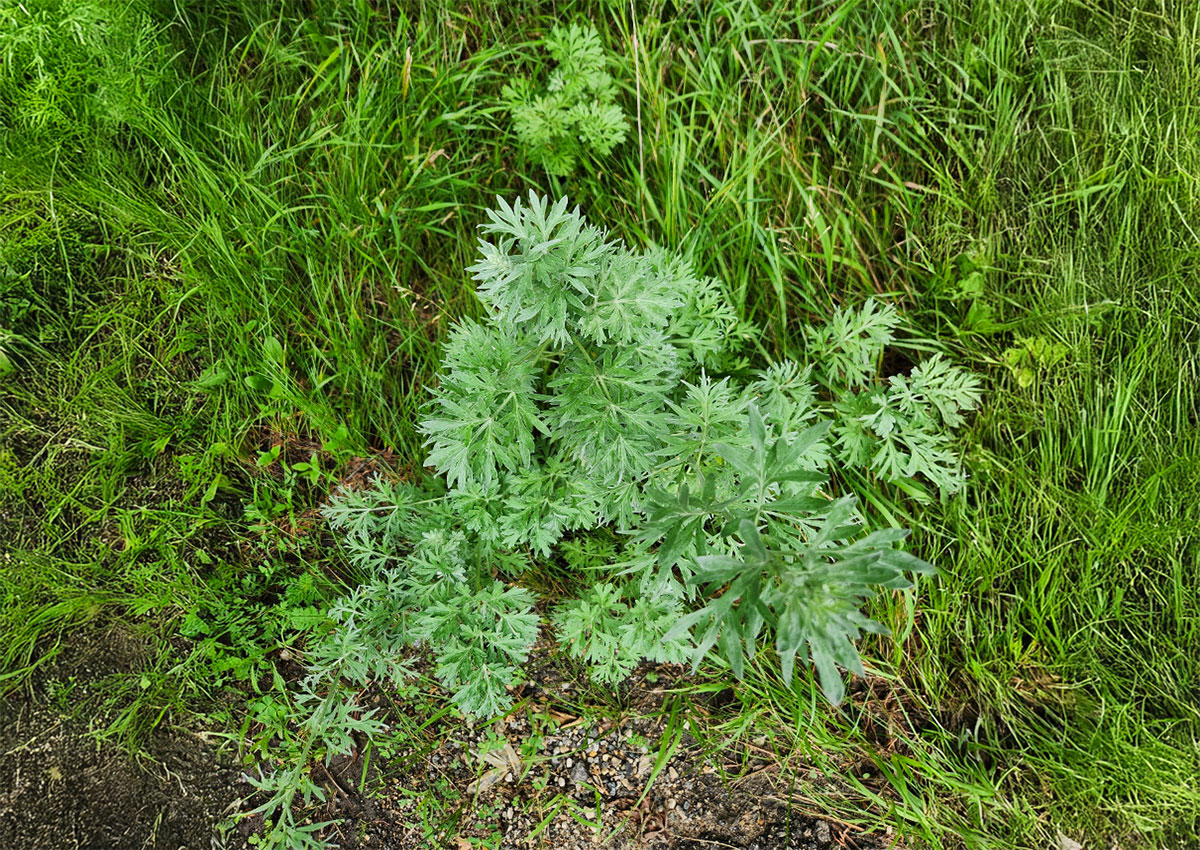
Written collaboratively by Eric Jones, Graig Reicks, Philip Rozeboom, Jill Alms, and David Vos.
Absinth wormwood is a statewide noxious weed that inhabits cropland, pasture, rangeland, right-of-ways, and waste sites. If not effectively managed, the species can displace desirable vegetation, reduce crop yield and decrease land value. Absinth wormwood should be treated with herbicide in June to early July.
Once plants start showing a white powdery appearance on the leaves, herbicide effectiveness decreases drastically (Figure 1). Plants at this mature stage should be mowed to minimize seed production and competition with desirable vegetation. Mowing alone may not be effective as regrowth commonly occurs in the fall. Ideally, the regrowth of the mowed absinth wormwood plants should be treated with herbicides after a light frost. A light frost and shorter day length triggers the plants to stop sending carbohydrates and other assimilates from the leaves down to the underground structures. Therefore, when the herbicide is applied at this time, the herbicide is being translocated throughout the entire plant. Monitor the treated areas in the spring next year to determine if more management is needed.
Refer to the most-recent SDSU Extension Weed Control: Noxious Weeds Guide for more information on effective herbicides to manage absinth wormwood and other noxious weeds.


